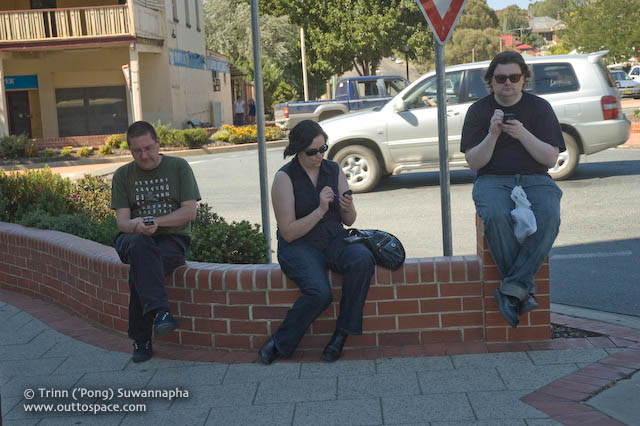From Vista magazine, May 2007
This digital life (version 2.0)
Nick, a recent addition to Microsoft, is a long time blogger, presenter and geek. Read Nick’s exploits and stories at http://www.nickhodge.com. A part of Nick’s “job†at Microsoft is to collect and record Australia’s Geek Stories. Turn your web browser to http://thegeekstories.com. To hear what Nick is doing almost on a minute by minute basis, catch Nick on http://twitter.com/. Note: Twitter is the latest online success story, and no one who uses twitter exactly knows exactly why. Creating an account is easy, and adding Friends to watch and talk to is easy. Ignoring the tweets (singular noun of a posting) is tough. The web industry calls twitter “micro-bloggingâ€
Thanks to the previous owner of this real estate, Frank Arrigo. Frank is the personification of “geekâ€, and the owner of the title as Microsoft’s local Professional Geek.
My personal geek story starts when I saw my first personal computer: an Apple II in 1981. Prior to this experience, I had only drawn on used computer punch cards. Seeing that computer changed my life, a whole new world opened up and career started. A small Seattle company had licensed a programming language to Apple, called AppleSoft Basic. That small company was Microsoft.
Continuing the language trend, the first programming language in which my parents purchased and in which I become fluent was Microsoft Basic 1.0 for the Mac. Friends still pester me for the project I started way back in May 1984: MacFarm. It never shipped, or at least is in perpetual development.
Leap ahead through time and various companies over employers such as Apple and Adobe – here I find myself at Microsoft. With the heritage in languages now extending into operating systems, applications, servers, Xboxes, online Live services – there is no shortage of fun things to install, experience and tell the world about.
Now my parents are now semi-retired in the Barossa Valley, still have that original museum piece Mac somewhere in their shed. Their primary PC is running Windows XP – and it and an internet connection changed how grandparents interact with their grandchildren. The use of webcams with Live Messenger, emails via Outlook and pictures back-and-forth keep my parents in contact with their Sydney-based grandson.
As memories move from physical to digital: photographs, music, snippets of video, blog entries and twitter tweets; the world connects and the tyranny of distance experienced by our ancestors disappears. A photograph can be uploaded into the “cloud†of the internet for all to see and comment on almost immediately.
Having read books such as Gibson’s Neuromancer and Stephenson’s Snow Crash, wonder where this always on, instant information world is could take us. It’s great to be here at Microsoft, being a part of helping Australians embrace technology – to get us closer together. My optimistic inner geek thinks the world will be ok.
Yes I admit it, I am a Professional Geek at Microsoft just like Frank.
